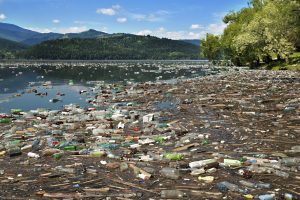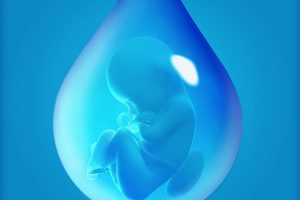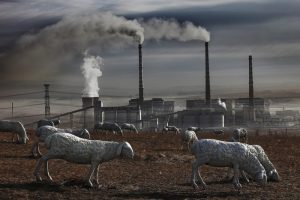Protecting our Water

Production of animal foods depletes potable water sources, and pollutes our rivers, lakes, and oceans, through the disposal of animal waste. Pesticides and inorganic substances, used for animal products and mono-crop production, end up in our water. Many of these substances can’t be filtered properly, ultimately reaching our bodies, and those of our children and loved ones.
Water is our most needed resource, second to air. Water is life, and humans are polluting it at increasing rates. This attitude is eliminating the possibilities for the survival of the human race. We already have enough problems with the pollution of water through oils spills, mining, extreme dumping of plastic, and other waste. Agricultural runoff must be stopped.
In developing countries, 70% of industrial waste is dumped directly into the water supply without any previous treatment. Scientists are finding more and more pollutants in the few water sources available to these people. National Geographic has shared multiple reports showing that our planet’s lakes, rivers, streams, and groundwater, are a chemical cocktail, filled with all sorts of waste. From birth control pills and sunscreen, to pesticides and petroleum, they all end up in our water supply. (1)
According to the U.S. Environmental Protection Agency, 40% of the lakes in America are too polluted for fishing, aquatic life, or swimming. (2) Each year 1.2 trillion gallons of untreated sewage, storm-water, and industrial waste, are dumped into US water. (3) About 10% of America’s beaches fail to meet the federal benchmark for what constitutes safe swimming water. (5) Every year, more people die from unsafe water, than from all forms of violence, including war. (6)
On the bright side, National Geographic shares that “technology has offered solutions, in the form of expensive filtration and treatment plants, that make our drinking water safe to consume. Some cities are even promoting green infrastructure, such as green roofs, and rain gardens to filter out pollutants.” (4)
We also know of initiatives such as The Ocean Cleanup project, founded by Boyan Slat when he was 17 years old. This project aims to clean up our oceans from millions of tons of plastic and other waste products. We are keeping hope alive.
Previous Section:
Next Section:
Acknowledgments
Thank you for reading!
Please donate to help us publish this book.
PayPal: trevesbruno@gmail.com
Venmo: @Bruno-Treves
Sources:
(1) http://www.nationalgeographic.com/environment/freshwater/pollution/
(2) U.S. Environmental Protection Agency. “Nonpoint Source Pollution: The Nation’s Largest Water Quality Problem.” Web Accessed April 25, 2015.
(3) Chambers, Neil B. “How Infrastructure Makes Water Work for Us.” Palgrave Macmillan, 2011.
4) http://www.nationalgeographic.com/environment/freshwater/pollution/
(5) https://www.usatoday.com/story/news/nation/2014/06/25/beaches-polluted-pollution-water-runoff-sewage-bacteria/11349409/
(6) http://www.un.org/waterforlifedecade/quality.shtml



